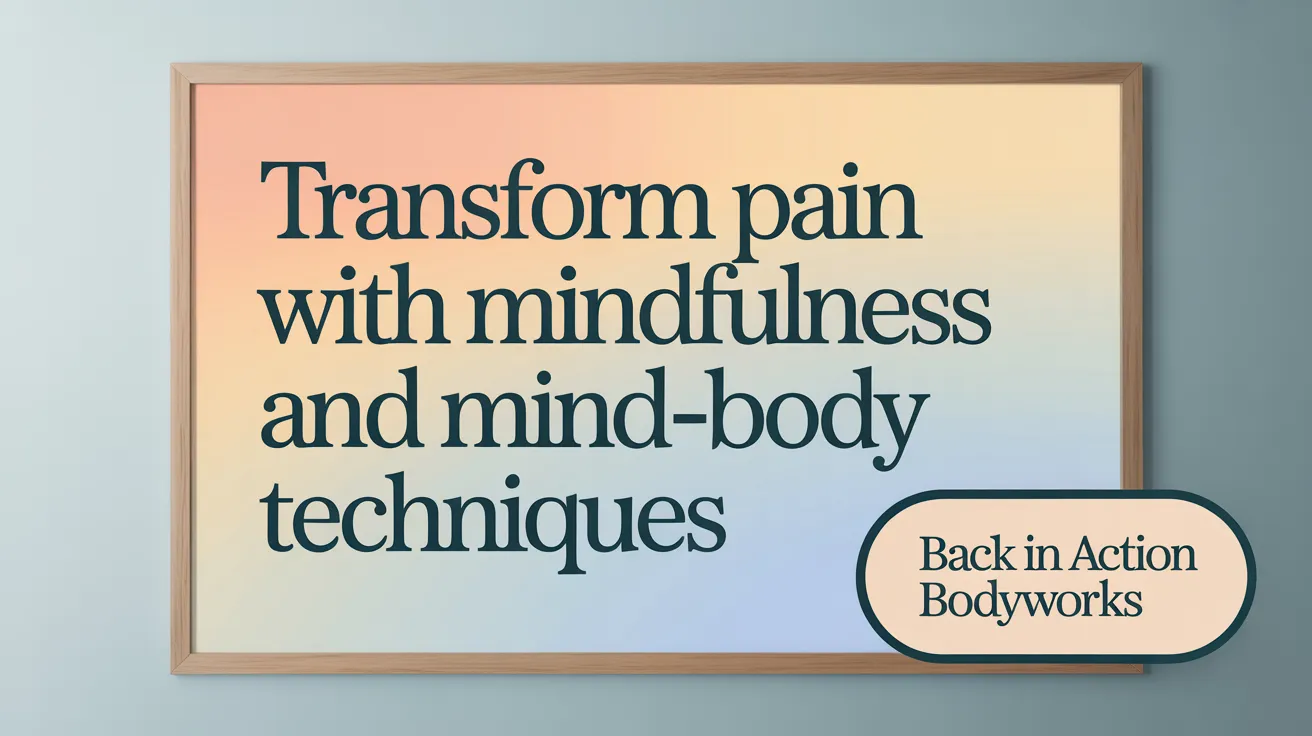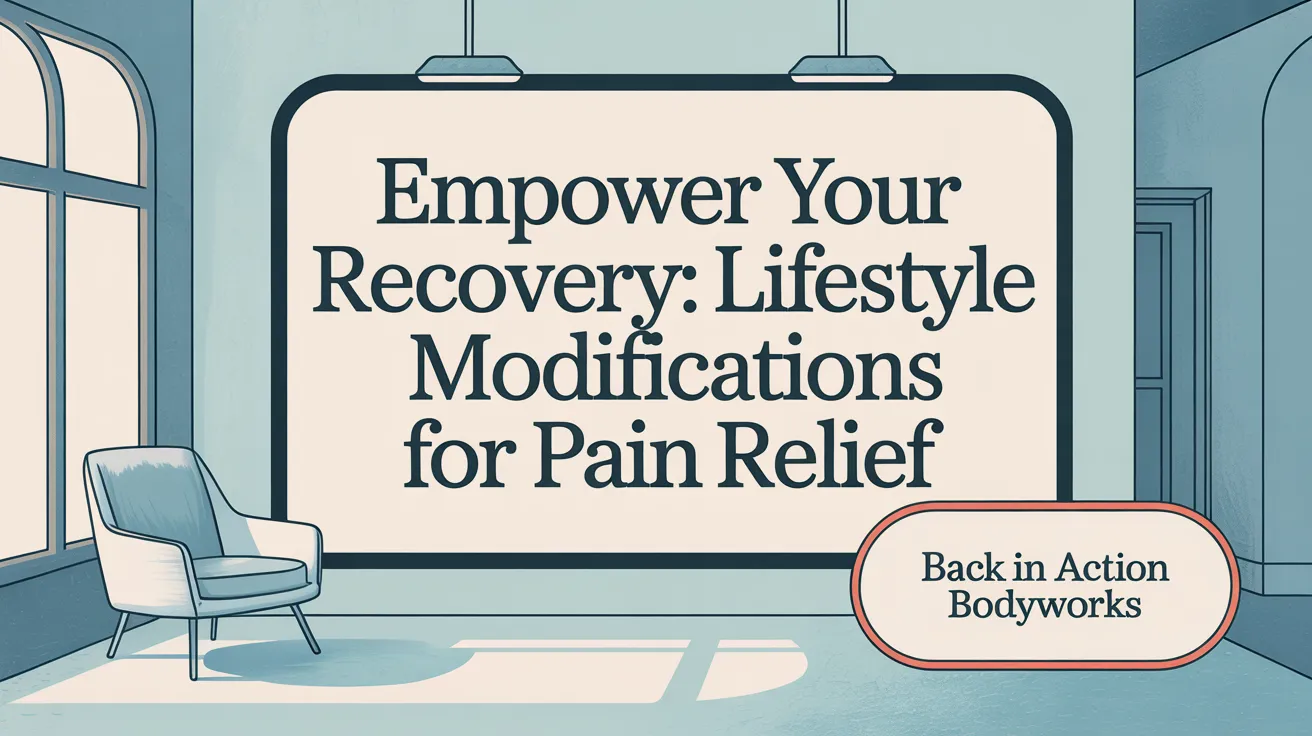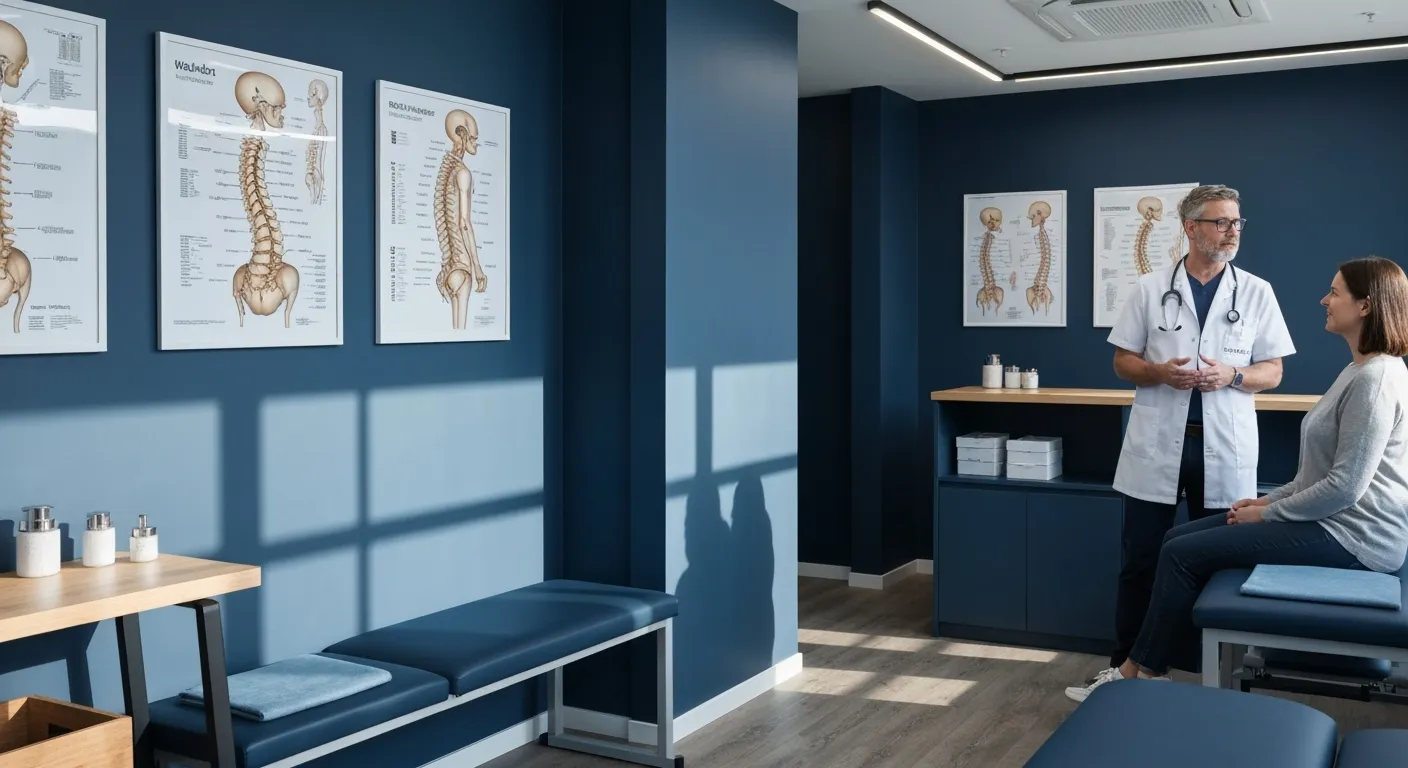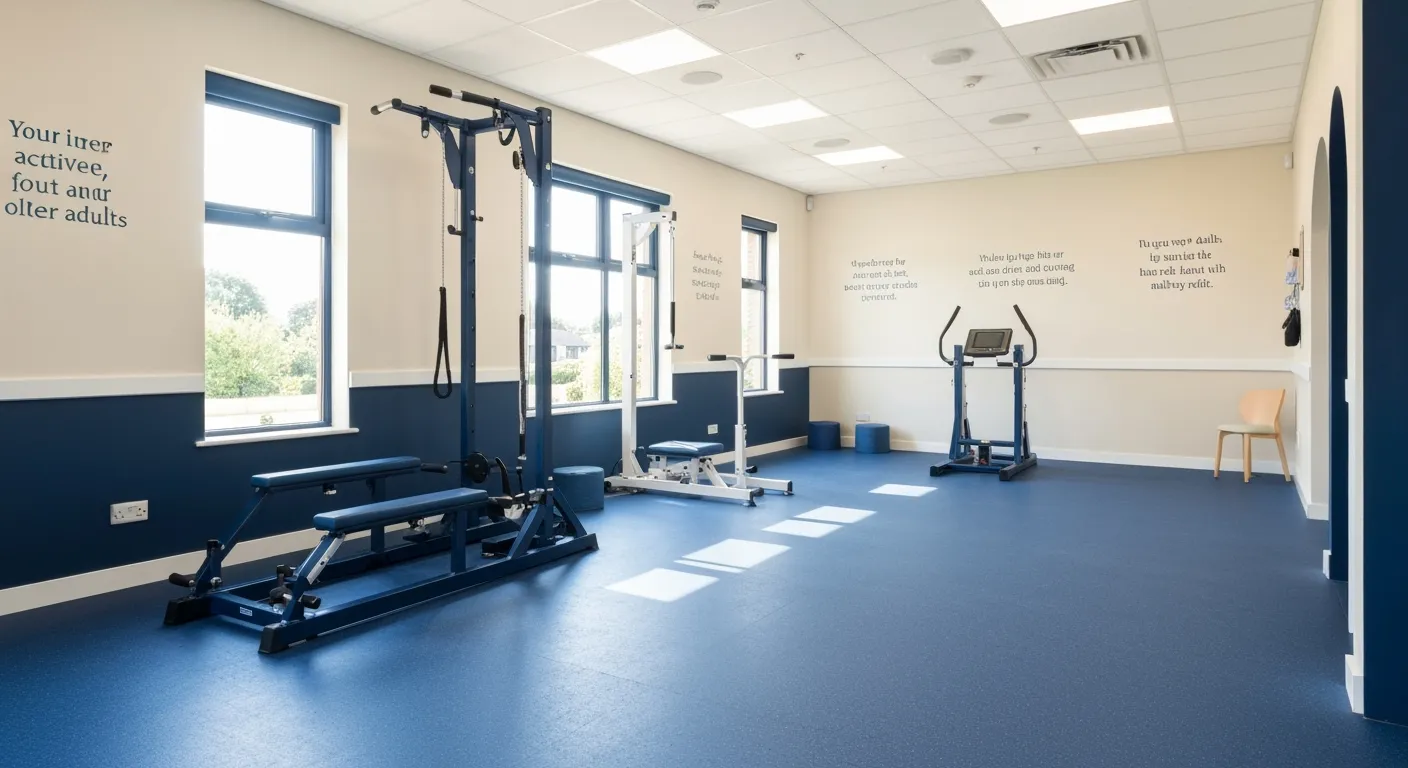Non-Invasive Treatment Alternatives: A Holistic Approach to Pain Relief
October 3, 2025
12 min

Understanding Holistic and Non-Invasive Pain Relief
Chronic pain affects millions worldwide, often diminishing quality of life and leading to increased reliance on medications and invasive procedures. However, a growing body of evidence supports the use of non-invasive and holistic therapies as effective alternatives or complements to traditional treatments. These approaches target both the physical and psychological components of pain, offering sustainable relief while minimizing risks. This article explores the diverse methods available, their mechanisms, benefits, safety considerations, and practical guidance for integrating these options into daily pain management.
Effective Non-Invasive and Holistic Therapies for Chronic Pain

Overview of non-invasive pain management methods
Non-invasive approaches offer safe and effective options for managing chronic pain without surgery or invasive procedures. These methods focus on modulating nerve signals, reducing inflammation, and enhancing the body’s natural healing abilities. Common techniques include heat and cold therapy, physical and occupational therapy, acupuncture, massage therapy, yoga, tai chi, and mind-body practices such as meditation and biofeedback.
Physical and psychological components of pain
Chronic pain is complex, involving both physical tissue damage or dysfunction and psychological factors like stress, anxiety, and emotional distress. Addressing only the physical aspect often provides incomplete relief. Effective holistic treatment recognizes this interplay, targeting both physiological and emotional pathways to reduce pain perception and improve quality of life (Holistic approaches to chronic pain).
Examples of holistic therapies with evidence base
Acupuncture, supported by numerous studies, can stimulate nerves and muscles to release pain-relieving chemicals like endorphins. Massage therapy improves circulation, relaxes muscles, and reduces stress hormones. Mindfulness meditation and cognitive-behavioral therapy help reframe pain-related thoughts, reduce muscle tension, and enhance emotional resilience.
Yoga and tai chi combine gentle movements, breathing, and meditation, which have shown benefits in conditions such as arthritis, fibromyalgia, and low-back pain. Biofeedback teaches control over physiological responses linked to pain, like muscle tension and heart rate.
Benefits of multimodal treatment approaches
Adopting a multimodal, personalized management plan that integrates physical therapies, mind-body techniques, dietary modifications, and lifestyle changes yields the best outcomes. It reduces reliance on pharmaceuticals, minimizes side effects, and enhances overall well-being. Such integrative care not only alleviates pain but also promotes mental health, social functioning, and resilience—crucial for sustainable pain management (Holistic Pain Management Program).
Mechanisms of Acupuncture and Massage Therapy in Pain Relief

How do acupuncture and massage therapy relieve pain?
Acupuncture relieves pain by targeting specific acupoints on the body with fine needles. This stimulation triggers the release of natural pain-relieving chemicals such as endorphins, serotonin, and norepinephrine. These biochemicals modulate the brain’s pain pathways, decreasing the perception of pain and reducing inflammation. Acupuncture also influences the peripheral nervous system by lowering levels of inflammatory mediators like prostaglandin E2 and cyclooxygenase-2 (COX-2), which can amplify pain signals. Locally, it improves blood flow and oxygen delivery to tissues, helping to reduce swelling and facilitate healing.
Massage therapy works primarily through relaxing tense muscles, which often become tight and sore due to chronic pain or injury. By kneading, rubbing, and applying circular motions to soft tissues, massage can diminish muscle soreness, increase circulation, and promote the removal of metabolic waste products. It also reduces stress hormones like cortisol, which can heighten pain sensitivity. Improved circulation delivers essential nutrients and oxygen to tissues, accelerating recovery, while relaxation of muscles decreases nerve irritability, collectively alleviating pain.
Synergistic effects of combining acupuncture and massage
When used together, acupuncture and massage therapy can produce a combined, synergistic effect in pain management. Acupuncture’s ability to trigger systemic release of endorphins complements massage’s local muscle relaxation. This dual approach addresses both nerve-mediated pain and muscular tension, offering a comprehensive pain relief strategy. The combination also enhances overall relaxation, reduces anxiety, and improves sleep, all of which contribute to better pain control.
Applications for various chronic pain conditions
These therapies are effective for a range of chronic pain conditions, including back pain, neck pain, osteoarthritis, fibromyalgia, tension headaches, and migraines. Particularly, in conditions like osteoarthritis, acupuncture can reduce joint pain and stiffness, while massage eases muscle tightness around the affected area. Patients with fibromyalgia often report reductions in overall pain and muscle tenderness. Moreover, the holistic benefits extend beyond pain relief, improving mood, flexibility, and quality of life, making acupuncture and massage valuable adjuncts in integrated pain management programs. For more information on managing fibromyalgia and osteoarthritis with these methods, see Fibromyalgia pain management and Chronic pain and complementary health approaches.
More about the physiological and biochemical mechanisms
Research indicates that acupuncture influences neural activity by activating endogenous opioid systems and modulating neurotransmitter levels in the central nervous system. It also impacts neuroplasticity, helping to recalibrate pain pathways. Massage therapy enhances parasympathetic nervous system activity, promoting relaxation and healing. Both therapies can affect gene expression related to inflammation and tissue repair, providing a comprehensive biological basis for their analgesic effects. Understanding these mechanisms underscores their role as safe, effective, non-invasive pain management tools in managing chronic pain.
For further insights into how these therapies influence pain pathways, search for "Physiological effects of acupuncture and massage therapy on pain" or consult authoritative sources such as UCLA Health's alternative treatments for chronic pain and Harvard Health’s non-invasive pain relief techniques.
Mindfulness and Mind-Body Techniques: Neural Pathways to Pain Relief

What is the role of mindfulness and mind-body techniques in pain relief?
Mindfulness and related mind-body practices, such as meditation, breathing exercises, yoga, and tai chi, are increasingly recognized for their ability to alleviate chronic pain. These techniques engage specific brain pathways that regulate how pain is perceived and emotionally processed.
Research shows that mindfulness efforts help activate certain brain regions, including the anterior insula, anterior cingulate cortex (ACC), orbitofrontal cortex (OFC), and prefrontal cortex. Activation of these areas facilitates top-down modulation, which inhibits pain signals at the spinal level and alters the brain’s interpretation of pain signals.
Practicing mindfulness fosters relaxation, acceptance, and emotional regulation, helping patients manage stress and the emotional distress often accompanying chronic pain. For conditions like fibromyalgia, migraine, and low back pain, these techniques reduce both the subjective experience of pain and related anxiety. (See more on mindfulness techniques for pain reduction and mindfulness meditation for pain management.)
Neuroscience of pain modulation via mind-body techniques
The neural mechanisms involved include increased activity in pain-inhibiting pathways and decreased activation of regions associated with pain evaluation and unpleasantness. Unlike the natural release of endorphins associated with placebo effects, mindfulness operates through distinct neural systems that impact both sensory input and cognitive evaluation.
Neuroimaging studies have demonstrated changes in connectivity and activity within the brain's pain matrix, reflecting improved regulation over pain perception and emotional responses. These changes help diminish the intensity and unpleasantness of pain without relying solely on pharmacological relief. (Further information on neuroplasticity promotion in pain therapy and cognitive behavioral therapy and pain.)
Benefits for chronic pain conditions
Patients practicing mindfulness report better coping skills, reduced pain severity, and an improved quality of life. The techniques are safe, cost-effective, and can be integrated into daily life without significant side effects.
Long-term practice enhances resilience and emotional well-being, addressing the psychological aspects of chronic pain. This comprehensive approach complements other therapies and provides a sustainable tool for managing persistent pain. (For additional insights, see holistic approaches to pain relief and holistic pain management programs.)
Distinctions from placebo effects
While some benefits of mindfulness overlap with placebo responses, evidence indicates that mindfulness and similar techniques activate specific brain pathways that produce genuine physiological changes. These changes are observable through neuroimaging and correlate with reductions in pain perception, confirming their efficacy beyond placebo mechanisms.
In conclusion, mindfulness and mind-body practices act through neural pathways that modulate pain at multiple levels, offering a powerful, non-invasive strategy to improve pain management and overall well-being. (Learn more at non-drug approaches to chronic pain and non-invasive pain relief techniques.)
Complementary Movement Therapies: Yoga and Tai Chi in Pain Management

Can yoga and tai chi be used as complementary therapies for pain management?
Yes, yoga and tai chi for pain management are widely recognized as effective complementary practices for managing various types of chronic pain. These gentle, low-impact exercises blend physical movements with breathing techniques and mindfulness, promoting relaxation and reducing muscle tension.
Research evidence supports their benefits in conditions such as osteoarthritis, fibromyalgia, headaches, and low back pain. Tai chi has been shown to improve joint function, balance, stiffness, and pain, especially among older adults with osteoarthritis. Similarly, yoga helps to alleviate symptoms like neck pain, headaches, and joint discomfort, offering both physical and mental health benefits.
Both practices encourage a holistic approach targeting not just physical symptoms but also emotional well-being. Their emphasis on mindful movement and breathing fosters stress reduction, which can further diminish pain perception.
Combining movement with breath and mindfulness
Integrating breathing exercises and meditation with physical movements in yoga and tai chi enhances their effectiveness. This combination helps in calming the nervous system, improving flexibility, and strengthening muscles, which ultimately can reduce pain intensity.
Practitioners often report that these practices help break the cycle of pain by addressing emotional stressors and improving body awareness. For example, tai chi's slow, deliberate movements combined with deep breathing can boost balance and reduce stiffness, while yoga’s mindful stretching can improve posture and decrease nerve irritability.
Safety and guidance considerations
To maximize benefits and minimize risks, it is crucial to practice under proper guidance, especially for individuals with existing health conditions or severe pain. Working with trained instructors ensures correct technique, appropriate modifications, and safety.
People should consult healthcare providers before starting new movement therapies, particularly if they have significant joint issues or neurological conditions. With proper supervision, yoga and tai chi can be safe and highly beneficial components of a comprehensive pain management strategy.
Herbal Remedies and Dietary Approaches for Pain Relief

What evidence supports the use of herbal remedies and dietary approaches for pain relief?
Growing scientific research underscores the potential benefits of herbal remedies and dietary strategies in managing pain through their anti-inflammatory and analgesic properties. Notable herbs such as turmeric, ginger, willow bark, and capsaicin contain active compounds—curcumin, 6-gingerol, salicin, and TRPV1 agonists—that help lower inflammation and soothe nerve pain.
Clinical studies have provided promising results. For instance, a 2020 trial involving 545 participants showed that Boswellia (frankincense) effectively alleviates osteoarthritis symptoms like pain and stiffness. Similarly, ginger has demonstrated the ability to control postoperative pain and reduce muscle soreness, showing comparable effectiveness to NSAIDs. The herbal supplement GCSB-5 has also displayed efficacy in improving joint health in osteoarthritis patients.
In addition to herbs, dietary strategies focusing on anti-inflammatory foods —such as vegetables, fruits, omega-3 fatty acids, and nuts—have been linked to reductions in systemic inflammation and pain. Omega-3 fatty acids from fish oils can decrease joint swelling and tenderness, while foods rich in antioxidants combat oxidative stress that contributes to chronic pain.
Essential oils like lavender and eucalyptus have shown benefits in relieving conditions like rheumatoid arthritis and muscle pain by reducing inflammation and promoting relaxation. Furthermore, topical capsaicin cream is used to desensitize nerve endings and reduce pain signals.
Despite these positive findings, many herbal remedies need further rigorous research to validate their safety, determine optimal dosages, and understand their mechanisms of action. Moreover, herbal products can interact with medications, making consultation with healthcare providers essential before incorporating them into a pain management plan.
In summary, evidence from traditional use and clinical trials supports the role of certain herbs and dietary modifications in pain relief, but these approaches should complement conventional treatments under medical supervision to ensure safety and efficacy.
Safety and Limitations of Integrative Pain Management Methods

How safe are integrative and complementary medicine methods for pain management?
Integrative and complementary therapies for pain are generally regarded as safe when performed by trained and qualified practitioners and used appropriately. Techniques such as acupuncture, massage therapy, mindfulness, yoga, and spinal manipulation have established safety records and can be effective adjuncts for managing chronic pain.
However, safety depends on individual health conditions; for example, those with bleeding disorders should exercise caution with certain therapies, and pregnant women should consult health providers before starting treatments. Nutritional supplements and herbal remedies, while popular, may pose risks like side effects, herb-drug interactions, or contamination if not sourced from reputable suppliers. It's vital for patients to disclose all supplement use to healthcare providers.
Ensuring therapies are delivered by licensed professionals in regulated settings further enhances safety. Additionally, patients should be cautious of unverified online products and unqualified practitioners, which can increase risk. Responsible use under professional guidance can maximize benefits and minimize adverse effects, making integrative approaches a safe complement to conventional treatments.
What are the limitations of non-invasive and holistic therapies in pain management?
Despite their safety and growing evidence of benefits, these therapies have certain limitations. Response to treatments varies among individuals, and some may experience only minimal or delayed relief.
Holistic methods typically require ongoing commitment and active participation, which can be challenging for some patients and may result in longer timeframes to see improvements. They are not always suitable for immediate or severe pain scenarios where rapid pain control is necessary.
Scientifically, the evidence supporting many complementary therapies remains inconsistent, partly due to variability in protocols and individual responses. Additionally, many therapies lack FDA approval or insurance coverage, making them less accessible and potentially costly.
Furthermore, while these approaches can significantly reduce reliance on medications and improve quality of life, they may not fully eliminate pain in all cases—especially in complex or severe conditions. Therefore, they are best used as part of a comprehensive, multidisciplinary pain management plan rather than sole therapies.
Ultimately, recognizing these limitations helps set realistic expectations and encourages a balanced approach—integrating conventional and holistic methods for optimal pain control.
Integrating Lifestyle Modifications and Daily Practices in Holistic Pain Management

What lifestyle modifications can enhance holistic pain management programs?
Lifestyle changes are fundamental in enhancing holistic pain management approaches. Regular, gentle physical activity such as walking, swimming, yoga, or Tai Chi can improve flexibility, strengthen muscles, and reduce inflammation. These activities help retrain the nervous system’s response to pain and promote better physical function.
Stress reduction techniques like mindfulness meditation, deep breathing exercises, and progressive muscle relaxation are effective in decreasing muscle tension and emotional distress related to chronic pain. Creating a calming routine and engaging in relaxing hobbies can further alleviate mental stress.
Good sleep hygiene is crucial, as restorative sleep reduces pain perception and supports overall health. Strategies include maintaining a consistent sleep schedule, avoiding screens before bedtime, and creating a comfortable sleeping environment.
Dietary influences also play a significant role. An anti-inflammatory diet rich in fruits, vegetables, omega-3 fatty acids from fatty fish, and healthy fats like olive oil can further decrease systemic inflammation and pain. Limiting processed foods, sugar, and excessive salt aids in reducing swelling.
Additional efforts such as avoiding tobacco, limiting alcohol, and making ergonomic adjustments at work or home support pain reduction. Social support from family, friends, or support groups provides emotional resilience, which is vital for managing persistent pain.
How can patients implement holistic pain management strategies in daily life?
Patients can incorporate holistic pain management into everyday routines by establishing a structured plan developed in consultation with healthcare providers. Starting with gentle, consistent exercise like yoga, or Tai Chi can build strength and flexibility over time.
Mind-body practices such as guided imagery, meditation, or deep breathing can be integrated into daily moments of calm, helping to manage stress and reduce pain signals.
Adopting an anti-inflammatory diet involves meal planning that emphasizes vegetables, fatty fish, and nuts while reducing processed and inflammatory foods. Keeping a food and symptom diary can help identify triggers and tailor dietary choices.
Sleep hygiene practices and maintaining good posture can prevent exacerbation of pain symptoms. Incorporating support systems, whether through family, peer groups, or professional counseling, provides emotional backing and motivation.
Exploring complementary therapies such as acupuncture, heat/cold therapy, and massage sessions can provide additional relief when combined with lifestyle modifications. Regular check-ins with healthcare providers ensure strategies remain effective and tailored to individual needs.
By making incremental changes and committing to a comprehensive plan, patients can empower themselves to manage pain holistically, improving their quality of life and physical function.
Embracing a Holistic Path to Pain Relief
Non-invasive and holistic pain management strategies offer promising alternatives and complements to traditional medical treatments, emphasizing whole-person care that integrates physical, psychological, and lifestyle factors. By combining evidence-based therapies such as acupuncture, massage, mindfulness, yoga, and dietary adjustments, individuals can experience meaningful pain relief with fewer risks. While challenges remain in accessibility and variability of responses, ongoing research and patient education are key to optimizing these approaches. Ultimately, personalized, multimodal pain management fosters improved function and quality of life, reducing dependence on medications and invasive procedures.
Recent articles

Simple Lifestyle Adjustments to Maintain a Healthy Spine

Personalized Nutritional Counseling for Improved Health Outcomes

Exploring Non-Surgical Treatments for Spine-Related Conditions

An Introduction to Spinal Decompression for Sciatica Patients

Transformative Success Stories: Patient Experiences with Chiropractic Treatments

Why Chiropractic Care Is Essential for Back Pain Relief

Addressing Underlying Causes Versus Symptom Management in Pain Care

The Role of Nutrition in Enhancing Chiropractic Treatment Effectiveness

Sciatica Treatment Options: Is Spinal Decompression Right for You?

Lifestyle Tips to Maintain a Healthy Spine and Prevent Back Issues

The Synergy Between Physiotherapy and Chiropractic Treatments

What Happens During Your Initial Chiropractic Consultation

Effective Corrective Exercises for Sustainable Pain Management

Taking a Root Cause Approach to Chronic Pain Management

Holistic Pain Management Techniques Without Surgery

How Patient Success Stories Validate Chiropractic Care Benefits

Spinal Decompression: Innovative Treatment for Sciatic Nerve Pain

Spinal Decompression Therapy: A Non-Invasive Approach to Sciatica Relief

Exploring Holistic Approaches Beyond Surgery for Pain Relief

Practical Lifestyle Advice to Support a Healthy Spine Every Day

Corrective Exercise Routines Designed for Long-Term Pain Prevention

Real Patient Stories: Overcoming Chronic Pain with Chiropractic Care

Lifestyle Changes That Promote a Healthy Spine and Prevent Injury

How Addressing the Root Cause of Pain Leads to Lasting Relief

Non-Surgical Holistic Therapies to Manage Chronic Pain Effectively

Nutritional Counseling's Impact on Physical Health and Healing

Benefits of Regular Chiropractic Care for a Stronger Back

Your First Chiropractic Visit: What to Expect and How to Prepare

Patient Experiences: How Chiropractic Care Transformed Their Lives

Exploring Holistic, Non-Surgical Options for Pain Management

Combining Physiotherapy with Chiropractic Treatments for Enhanced Recovery

Holistic Treatments That Offer Alternatives to Surgery for Pain Relief

Corrective Exercise Strategies for Long-Term Spine Health

How Physiotherapy Complements Chiropractic Adjustments for Better Outcomes

First-Time Chiropractic Visitors: What You Should Know

Understanding the Importance of Treating Pain at Its Source

Adopting Lifestyle Changes to Support Your Spine's Wellness

Utilizing Physiotherapy to Enhance Chiropractic Treatment Outcomes

The Key Advantages of Chiropractic Care for Back Pain Sufferers

Why Focusing on Root Causes Improves Pain Treatment Success

Corrective Exercises That Promote Lasting Pain Relief and Mobility

Sciatica Relief Through Targeted Spinal Decompression Techniques

Preparing for Your First Chiropractic Appointment with Confidence

Healthy Lifestyle Habits for Maintaining Spinal Alignment

Success Stories Highlighting Chiropractic's Role in Pain Recovery

Top Benefits of Chiropractic Care for Chronic Back Pain

Nutrition Tips to Boost Your Overall Wellness and Recovery

How Chiropractic Care Alleviates Back Pain Naturally

How Nutritional Counseling Supports Overall Wellness and Spine Health

Step-by-Step Guide to Your First Visit with a Chiropractor

Using Nutrition to Support Chiropractic and Overall Wellness

Integrating Physiotherapy in Your Chiropractic Healing Journey

How Physiotherapy Complements Chiropractic Adjustments for Faster Healing

Lifestyle Tips for Maintaining a Healthy Spine and Preventing Back Pain

Heartwarming Patient Testimonials Highlighting Chiropractic Success

How Proper Nutrition Supports Chiropractic and Physiotherapy Treatments

Combining Physiotherapy and Chiropractic Treatments for Optimal Recovery

Why Chiropractic Treatments Are Effective for Managing Back Pain

Choosing a Chiropractor: Tips for Finding a Trusted Provider

Integrating Physiotherapy and Chiropractic: Benefits and What to Expect

How Tailored Corrective Exercises Can Aid in Pain Management

Chiropractic Care: A Proven Solution for Alleviating Back Pain

What to Expect at Your First Chiropractic Visit: A Comprehensive Guide

The Importance of Root Cause Analysis in Effective Pain Management

The Role of Corrective Exercises in Sustaining Pain-Free Living

Combining Chiropractic and Physiotherapy for Comprehensive Pain Relief

How Addressing Underlying Causes Improves Pain Treatment Effectiveness

Maintaining Spinal Health Through Lifestyle Changes and Preventive Care

Understanding the Benefits of Chiropractic Adjustments for Back Pain Sufferers

Spinal Decompression Therapy: A New Hope for Sciatica Relief

Lifestyle Recommendations to Support a Healthy Spine and Reduce Pain

Choosing the Right Chiropractor: Key Factors to Consider Before Your First Appointment

Non-Invasive Treatment Alternatives: A Holistic Approach to Pain Relief

Corrective Exercises to Support Long-Term Relief from Chronic Pain

Exploring Non-Surgical Approaches to Spine Health and Wellness

Tips for Daily Habits That Keep Your Spine Strong

Success Stories: How Chiropractic Treatments Changed Lives

Why Focusing on the Root Cause of Pain Leads to Better Outcomes

Nutritional Counseling and Its Impact on Overall Wellness and Recovery

Patient Testimonials That Showcase the Power of Chiropractic Care

Preparing for Your First Chiropractic Appointment: What You Need to Know

Holistic Treatment Options: Beyond Surgery for Pain Relief

Holistic Pain Relief Methods That Avoid Surgery

Nutritional Strategies for Supporting Spine Health and Recovery

First Chiropractic Visit: What Happens and How to Prepare

Chiropractic Patient Success Stories: Inspiring Journeys to Wellness

Effectiveness of Spinal Decompression Therapy in Managing Sciatic Nerve Pain

Addressing Pain at Its Source: Why Treating the Root Cause Matters

Corrective Exercise Programs Designed for Long-Term Pain Prevention

Healthy Lifestyle Advice for Maintaining Spinal Alignment

Understanding Spinal Decompression as a Treatment for Sciatica Pain

Benefits of Chiropractic Care Specifically for Back Pain Relief

Understanding Gait Analysis in Physiotherapy

The Difference Between Muscle Soreness and Dysfunction

Workplace Stress Statistics: How Muscle Tension Impacts Productivity

How Physiotherapy Improves Mobility for Seniors

How to Communicate Pain Levels to Your Therapist Effectively

Physiotherapy Interventions for Balance and Fall Prevention

How Physiotherapy Helps Post-Surgical Recovery

